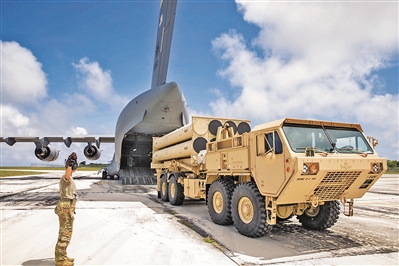
The US Department of Defense released the unclassified version of 2022 Missile Defense Review report on October 27. American media said the report reiterated the primary importance of homeland missile defense with special emphasis on air defense and anti-missile fortifications in Guam. As the Biden administration’s overarching guideline on missile defense, the document is considered to be of great importance for directing the US military’s air defense and anti-missile system development. But analysts generally believed the latest report is just harping on the same string compared with previous ones and it doesn’t have a clear execution plan.
UAS threat overplayed
The previous Missile Defense Review report was released by the Trump administration in 2019, which put a missile defense plan against the background of major-country competition for the first time. The 2022 report reflects America’s current missile defense policy to a large extent by emphasizing the “full spectrum of air and missile threats”, particularly UAS, which is described as “an inexpensive, accessible, flexible, expendable… way” to carry out tactical-level strikes as well as larger scale attacks.It states that “UAS can have similar lethality to cruise missiles and can launch from a wide array of locations, virtually undetected. UAS are generally not perceived by adversaries as having the same destabilizing geostrategic implications as larger missile forces, making them an increasingly preferred method to carry out tactical-level strikes.” Besides, the continuous development of UAS technology has also expanded the scope of its usage.
According to the report, the US will continue to develop active and passive defenses against regional hypersonic missile threats, and pursue a persistent and resilient sensor network to detect, track and intercept all hypersonic weapons.
Homeland defense the top priority
The report restresses homeland missile defense as the top priority in America’s missile defense strategy, and that the country will continue to upgrade and develop ground-based midcourse defense (GMD) systems.
It believes the US military needs to continue developing Next Generation Interceptor (NGI), which is expected to be deployed around 2028 and gradually replace the existing interceptors. According to a DoD official, they plan to buy 20 new interceptors, for which US$2.8 billion has been allocated from the 2023FY budget. American media reckoned that the country’s ground-based missile defense systems will mainly be used to cope with ballistic missile threats from medium-sized and small countries but not capable enough to counter major countries’ nuclear arsenal.
Another key region the report pays close attention to is Guam, which is considered part of the US homeland and a key logistics hub in the Indo-Pacific region. According to the report, “within the context of homeland defense, an attack on Guam or any other US territory by any adversary will be considered a direct attack on the US.” Additionally, as Guam is home to key regional power projection platform and logistics nodes, it is necessary to first and foremost implement the construction and upgrade plan for the ongoing missile defense system project there while enhancing regional defense and deterrence through intensified cooperation with allies and partners in joint air and missile defense.
Many issues left in limbo
Analysts generally held that this type of report released by the US is getting increasingly like make-do. First, it doesn’t have a specific timetable or clearly planned stages for addressing key issues. Some American experts said the report proposes to introduce hypersonic defense systems and space sensors for the defense of Guam, but it doesn’t give a timeline to evaluate whether those systems and devices can be used within 10 years.
Second, some parts of the report are vague. For instance, it doesn’t clarify America’s defense policy against missiles fired by major countries. The report reaffirms the previous stance that the US will fully rely on nuclear deterrence rather than missile defense to defend the homeland from ballistic missile attacks by major countries. It also commits to defending Guam as part of homeland, and suggests applying defense systems to keep the homeland from cruise missile attacks by major countries.
Besides, the report won’t change the congress’ attitude. It stresses competing with other countries in advanced technologies, such as hypersonic weapons, but the Senate is opposed to providing extra funds for the “glide-phase interceptor” currently developed by the Missile Defense Agency to intercept hypersonic missiles and isn’t likely to allocate too much money for similar programs in the future either.













